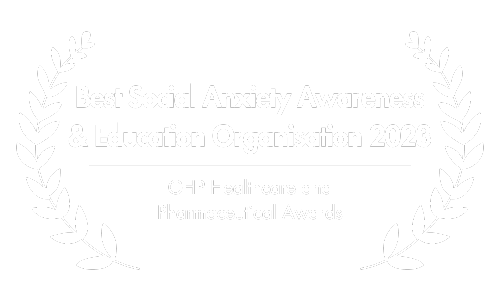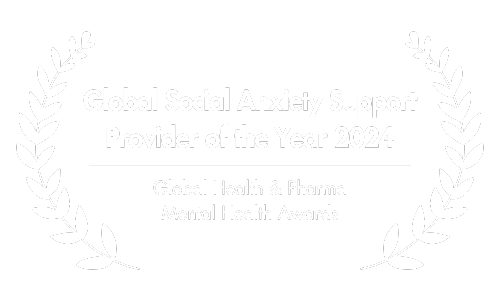Topical Ibuprofen: A New Frontier in Treating Facial Blushing
This article contains a recommendation for an online therapy provider that helps erythrophobia and social anxiety. If you purchase therapy services through this link, you will receive a significant discount and we will receive a commission.
Blushing is a uniquely human experience, often perceived as a simple, if somewhat quirky, part of our emotional palette.
Yet, for a significant number, this involuntary reddening of the face—triggered by emotions such as embarrassment, stress, or excitement—becomes more than just a temporary inconvenience.

For individuals struggling with erythrophobia, or the fear of blushing, this common physiological response escalates into a profound source of social anxiety and distress, profoundly affecting their quality of life and interactions with others.
The search for effective remedies has unveiled a promising avenue: the application of topical ibuprofen gel.
Unlike traditional psychological or medical interventions, this innovative method targets the physical symptoms of blushing.

By potentially reducing inflammation and affecting the dilation of facial blood vessels, topical ibuprofen offers hope for those seeking respite from the often debilitating effects of a blush-induced crimson countenance.
This article delves into the complex nature of blushing, the significant distress it can cause those with erythrophobia, and the encouraging role topical ibuprofen may play in alleviating these symptoms.

A. Deciphering Blushing: The Mind-Body Connection
Blushing serves as a fascinating mirror, reflecting the interplay between our psychological state and physiological reactions.
It acts as an involuntary signal, betraying emotions like embarrassment, guilt, or excitement.
To fully understand blushing, we must delve into both the mental triggers and the biological processes that cause this distinctive redness to sweep across our faces.
Psychological Triggers
The emotional roots of blushing are deeply entwined with our social experiences.
Embarrassment, stress, or the mere anticipation of being the center of attention can trigger this involuntary response.

Blushing, in essence, acts as a non-verbal communicator, signaling vulnerability or sincerity.
While often perceived as a social hindrance, it plays a crucial role in human interaction, facilitating trust and empathy among individuals.
However, for those with erythrophobia, the prospect of blushing is not just uncomfortable—it’s terrifying.
This fear can lead to avoidance behaviors, impacting one’s social life and well-being.

Recognizing this, the Diagnostic and Statistical Manual of Mental Disorders (DSM-5) categorizes the fear of blushing as a significant aspect of Social Anxiety Disorder (American Psychiatric Association, 2013), emphasizing the profound impact such fears can have on an individual’s daily interactions and psychological health.
Individuals with erythrophobia frequently worry about their blushing being noticed, prompting them to shun social engagements they might otherwise enjoy.
When they do choose to engage, it is often a distressing experience for them.

The Physiology Behind the Blush
From a physiological standpoint, blushing is orchestrated by the sympathetic nervous system—the part of our body responsible for the fight-or-flight response.
This system triggers the dilation of facial blood vessels, resulting in increased blood flow and the characteristic red hue of blushing.
In 2013, Peter Drummond and his colleagues revealed that the production of prostaglandins, compounds involved in inflammation and vasodilation, plays a significant role in this process.
This insight is crucial for understanding the mechanisms behind blushing and opens up new avenues for managing this response, particularly through the application of topical treatments like ibuprofen gel.
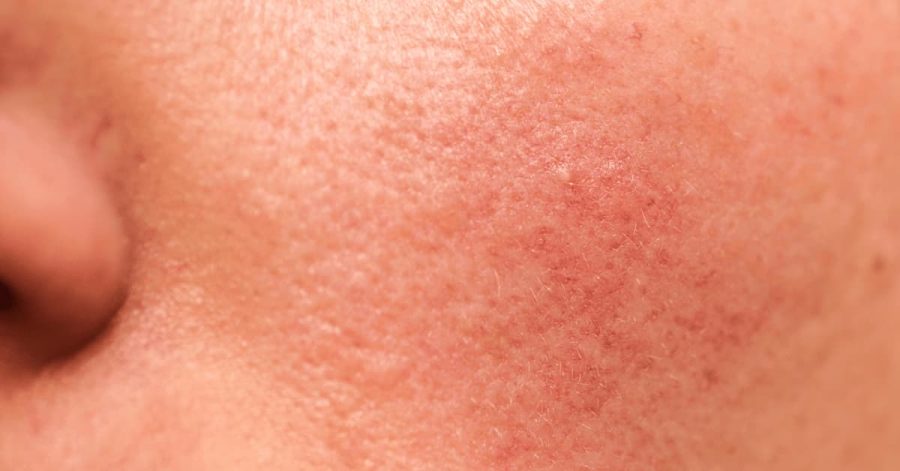
By acknowledging blushing as both an emotional expression and a physiological event, we lay the foundation for effective interventions.
Before diving into topical ibuprofen as a tool to reduce the blushing reaction, let’s first review the typical treatments applied to erythrophobia.
B. Current Treatments for Erythrophobia
The journey to manage erythrophobia—a fear deeply rooted in the physiological response of blushing—requires a multifaceted approach.
Traditional treatments have ranged from psychological interventions aimed at managing the anxiety surrounding blushing to medical treatments that address the physical symptoms directly.

Psychological Interventions: The Mind’s Shield
Cognitive-Behavioral Therapy (CBT) stands as a cornerstone in the psychological treatment of erythrophobia. CBT helps individuals understand the thought processes that fuel their fear of blushing and teaches them how to challenge and change these negative beliefs.
Techniques such as exposure therapy can desensitize individuals to their fear, reducing the anxiety associated with blushing and improving social interactions.

Mindfulness and Relaxation Techniques offer a complementary strategy, helping individuals manage the immediate physiological reactions to anxiety, such as blushing.
By promoting a state of calm and present-moment awareness, these techniques can mitigate the stress response that often triggers blushing.

Psychodynamic Therapy (PDT) delves into the unconscious patterns and past experiences that underpin the fear of blushing, offering insights into the emotional roots of this anxiety.
By exploring and understanding these underlying factors, PDT aids individuals in connecting their fear of blushing to their personal history and emotional development.
This process of uncovering and addressing unconscious motivations provides a path to resolving the core issues behind erythrophobia, facilitating a deeper and more lasting therapeutic outcome.

Medical Treatments: Beyond the Mind
Medications play a role for some individuals in managing the symptoms of erythrophobia.
Beta-blockers and anti-anxiety medications can help by modulating the body’s response to stress, potentially reducing the incidence of blushing (Logger et al., 2020).

Surgical Interventions, such as endoscopic thoracic sympathectomy (ETS), represent a more drastic measure for those with severe erythrophobia (Michiel Kuijpers et al., 2022).
ETS works by severing the nerves that trigger excessive facial blushing, thereby reducing the physical manifestations of the condition.
While effective for some, the irreversible nature of the procedure and the potential for side effects necessitate careful consideration.

The Promise of Topical Ibuprofen: A New Horizon
Against this backdrop of existing treatments, the application of topical ibuprofen emerges as a novel and promising approach.
Drawing on the findings of Drummond et al., 2013, this treatment targets the physiological mechanism of blushing at its source—the dilation of facial blood vessels mediated by prostaglandins.
By applying ibuprofen gel directly to the skin, it’s possible to inhibit the production of prostaglandins, thus reducing the inflammation and vasodilation that contribute to blushing.
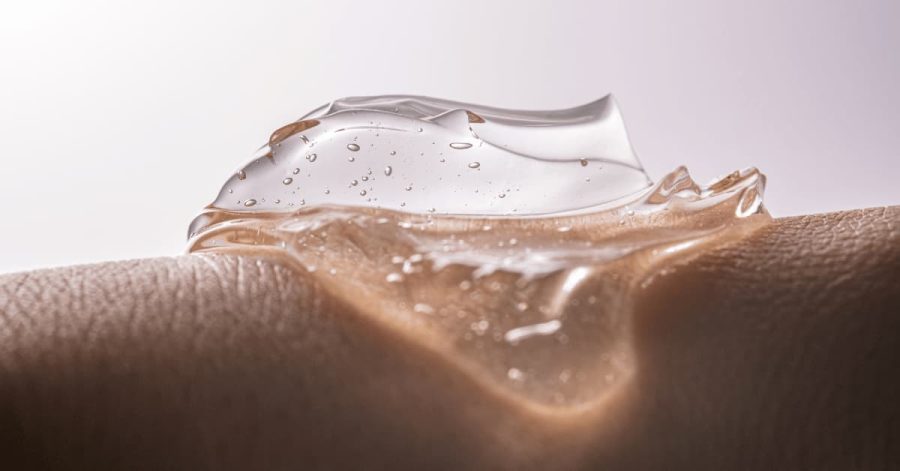
This localized treatment offers several advantages over traditional methods.
It directly addresses the physical symptoms of blushing without the systemic side effects associated with oral medications.
Moreover, it presents a non-invasive alternative to surgical interventions, offering a practical and accessible option for managing erythrophobia.
C. Topical Ibuprofen: A Closer Look at Its Mechanism and Impact
The innovative application of topical ibuprofen for managing erythrophobia offers a direct, targeted strategy to mitigate the physiological triggers of blushing.
Understanding the science behind this treatment sheds light on its potential to transform the lives of those affected by excessive blushing.
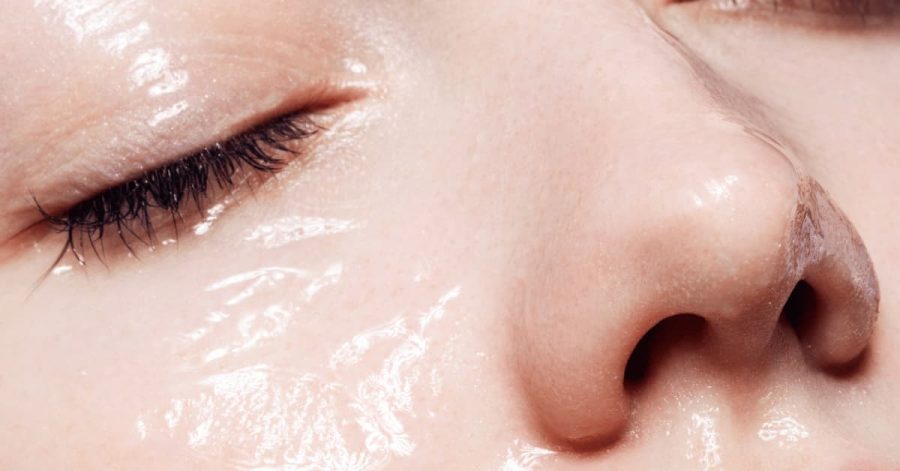
The Science Behind the Solution
Topical ibuprofen works by inhibiting the production of prostaglandins, key compounds involved in the body’s inflammation response and in the regulation of blood vessel dilation.
The research conducted by Drummond and colleagues illustrates that during episodes of emotional stress or physical exertion—common triggers for blushing—prostaglandins facilitate the dilation of facial blood vessels, leading to the visible flush.
By applying ibuprofen gel directly to the facial area, the gel counteracts this process, potentially offering a reprieve from the intensity and frequency of blushing episodes.
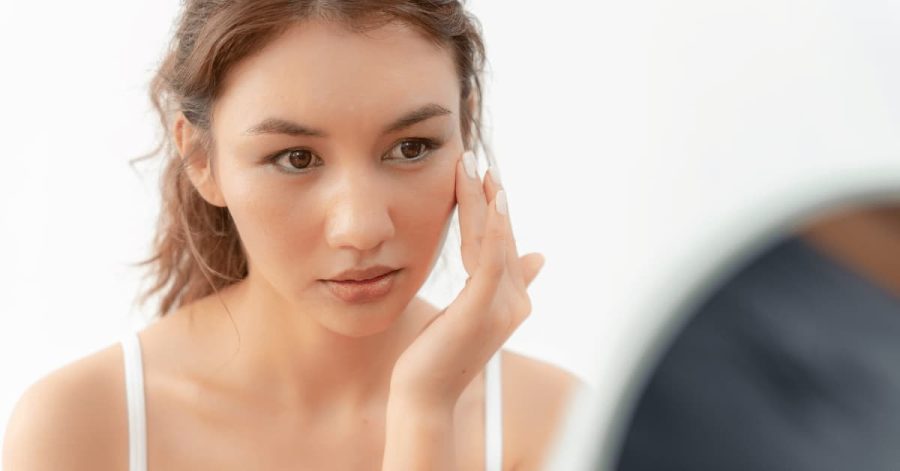
Dual Benefits: Beyond the Surface
The application of topical ibuprofen for erythrophobia extends beyond its physical effects on facial vasodilation.
Its real power may lie in the psychological relief it provides to those burdened by the fear of blushing.
By diminishing the physical manifestation of blushing, it can significantly reduce the social anxiety and avoidance behaviors that often accompany erythrophobia.
This dual impact—addressing both the physiological symptoms and the psychological distress—marks a significant advancement in the holistic treatment of erythrophobia.

D. Practical Application: Guidelines for Use
Navigating the use of topical ibuprofen to combat the symptoms of erythrophobia involves understanding the correct application methods, dosage, and safety considerations.
Drawing from the study by Drummond et al., 2013, we can establish a guideline for those looking to integrate this treatment into their management plan.
Please remember, to ensure the safest and most effective use of topical ibuprofen for erythrophobia symptoms, consulting with a healthcare professional is advisable, despite the generally low-risk profile of this treatment.

Application Tips
- Clean and Dry: Ensure that the area of application on the face is clean and thoroughly dried. This enhances the absorption of the ibuprofen gel into the skin, making it more effective.
- Targeted Application: Apply a thin layer of the gel directly to the cheeks or other areas prone to blushing, such as the ears or neck. The precision in application ensures that the gel works exactly where it’s needed, reducing unnecessary exposure to other areas of the skin.
- Preventative Approach: For optimal results, it’s recommended to apply the gel about 30 minutes before anticipated stressful situations or social engagements that could trigger blushing. This ensures the ibuprofen has sufficient time to be absorbed and take effect, key for potentially diminishing the intensity of the blush response.
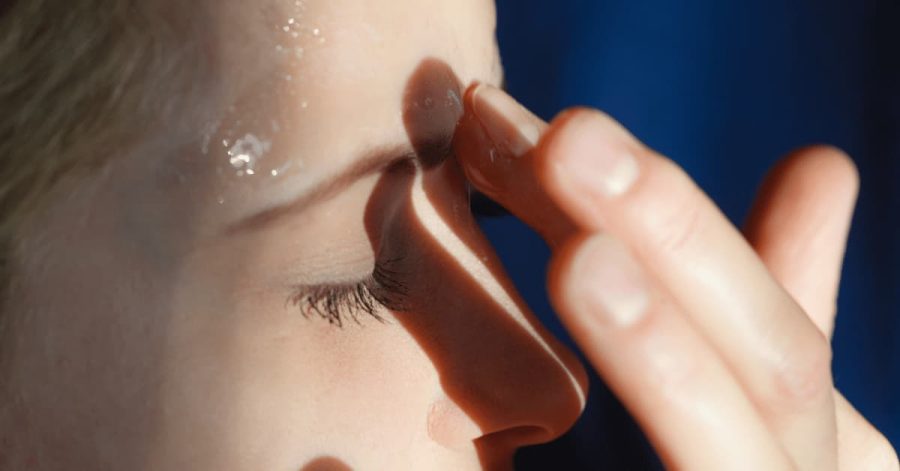
Dosage and Frequency
- Starting Dosage: Referencing the findings from Drummond et al., 2013, a 5% ibuprofen gel is a recommended starting point. This concentration is effective yet gentle enough for initial use on facial skin.
- Adjust According to Response: The frequency of application should be adjusted based on individual experiences and the specific situations that trigger blushing. Consistent monitoring of your response will help determine the optimal frequency for use.
Safety Considerations
- Patch Test: Before committing to regular use, perform a patch test by applying a small amount of the gel to a discreet area of skin. Monitor for any adverse reactions over 24 hours to ensure compatibility.
- Consult Healthcare Providers: Engaging in a conversation with a healthcare provider about using topical ibuprofen is essential, particularly for those with sensitive skin, existing allergies, or any medical conditions. This discussion will offer customized guidance and safety recommendations specific to your health needs.
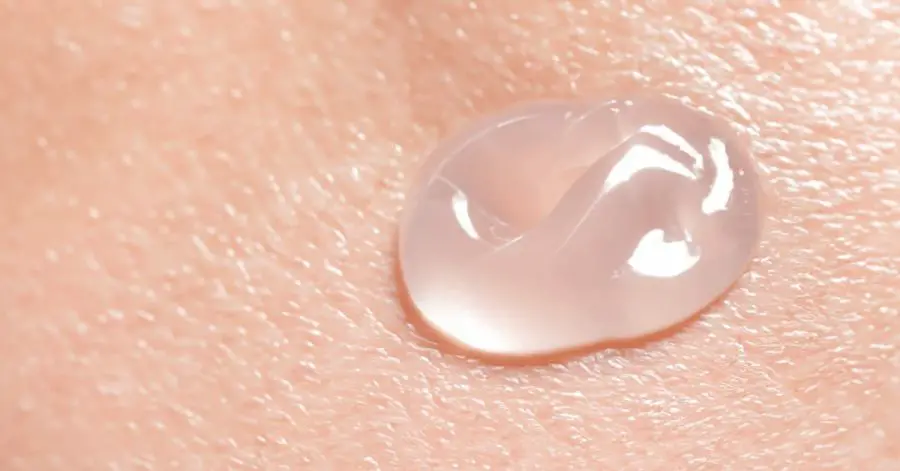
Adhering to these guidelines can help maximize the effectiveness of topical ibuprofen as part of a comprehensive approach to managing erythrophobia.
By combining these practical steps with an understanding of the condition’s psychological aspects, you can navigate your treatment journey with greater confidence and efficacy.
E. Integrating Support Systems and Anticipating Future Advances
While topical ibuprofen presents a promising option for directly addressing the physiological symptoms of blushing associated with erythrophobia, integrating additional support systems can enhance overall treatment efficacy and emotional well-being.
Furthermore, anticipating future innovations in treatment can offer hope and new possibilities for those affected by this condition.

Professional Therapy
For many dealing with erythrophobia, the fear and anxiety surrounding blushing extend beyond physical symptoms, touching on deeper psychological aspects.
Professional therapy has been instrumental in helping individuals understand and manage the root causes of their anxiety.
BetterHelp, an online therapy platform, makes accessing professional support more convenient.
For our readers, there’s an opportunity to receive a 50% discount on the first month of therapy, providing an accessible starting point for those seeking to explore therapy as a component of their treatment plan.
Simply use the following link when signing up for BetterHelp and the discount will be applied.

Educational Resources
Knowledge is a powerful tool in managing any condition, including erythrophobia.
Our free 7-day email course on social anxiety offers comprehensive insights into understanding social anxiety, of which erythrophobia is a significant component.
From symptoms and diagnosis to practical tips and treatment options, including psychotherapy and medication, this course lays a foundational understanding that empowers individuals to take informed steps towards managing their condition.

Looking Ahead: The Future of Erythrophobia Treatment
The field of mental health and dermatological treatment is ever-evolving, with continuous research and development paving the way for new solutions.
Innovations in topical treatments, such as advancements in formulation and delivery systems for medications like ibuprofen, hold promise for more effective and user-friendly applications.
Furthermore, the growing understanding of the genetic and neurological underpinnings of conditions like erythrophobia may lead to personalized medicine approaches, offering treatments tailored to individual physiological and psychological profiles.
At the same time, highly effective psychological interventions are already available. One of the most effective strategies for combatting the embarrassment often accompanying blushing is engaging in ‘shame attacking’ exercises.

F. Embracing a Brighter Future: A Conclusion
Erythrophobia, with its complex interplay of blush-inducing triggers and social anxiety, is a condition that challenges many.
Yet, through the synthesis of current treatments, supportive resources, and the anticipation of future innovations, a more hopeful landscape emerges.
By embracing the tools available today, from topical ibuprofen to professional therapy and educational resources, individuals can navigate their path towards overcoming erythrophobia with greater confidence and support.

As we conclude our exploration, let this be a reminder: the journey towards managing erythrophobia is both personal and universal, marked by challenges and triumphs.
With each new discovery and support extended, we move closer to a future where the fear of blushing no longer casts a shadow over social interactions, but rather becomes a manageable aspect of a well-lived life.
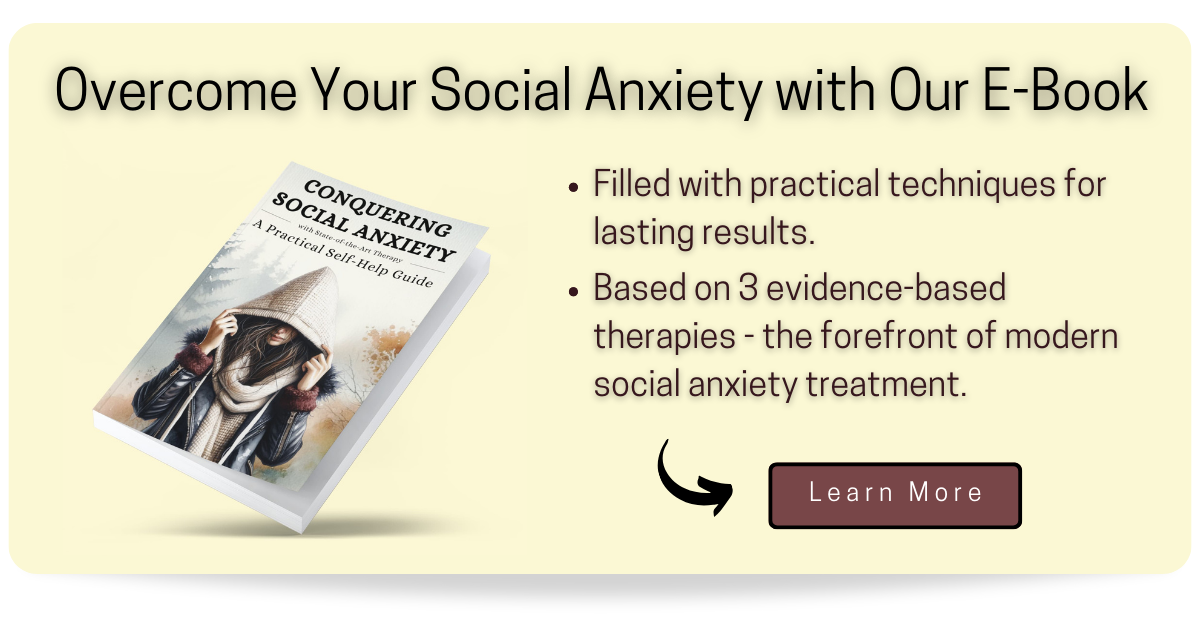
American Psychiatric Association. (2013). Diagnostic and statistical manual of mental disorders (5th ed.). American Psychiatric Publishing.
Drummond, P. D., Minosora, K., Little, G., & Keay, W. (2013). Topical ibuprofen inhibits blushing during embarrassment and facial flushing during aerobic exercise in people with a fear of blushing. European neuropsychopharmacology : the journal of the European College of Neuropsychopharmacology, 23(12), 1747–1753. https://doi.org/10.1016/j.euroneuro.2013.07.013
Kuijpers, M., van Zanden, J. E., Harms, P. W., Mungroop, H. E., Mariani, M. A., Klinkenberg, T. J., & Bouma, W. (2022). Minimally Invasive Sympathicotomy for Palmar Hyperhidrosis and Facial Blushing: Current Status and the Hyperhidrosis Expert Center Approach. Journal of clinical medicine, 11(3), 786. https://doi.org/10.3390/jcm11030786
Logger, J. G. M., Olydam, J. I., & Driessen, R. J. B. (2020). Use of beta-blockers for rosacea-associated facial erythema and flushing: A systematic review and update on proposed mode of action. Journal of the American Academy of Dermatology, 83(4), 1088–1097. https://doi.org/10.1016/j.jaad.2020.04.129

About the Author: Martin Stork
Martin is a professional psychologist with a background in physical therapy. He has organized and led various support groups for people with social anxiety in Washington, DC and Buenos Aires, Argentina. He is the founder of Conquer Social Anxiety Ltd, where he operates as a writer, therapist and director. You can click here to find out more about Martin.







